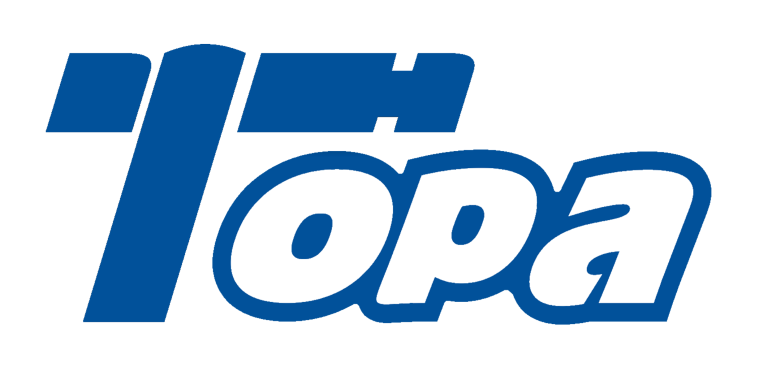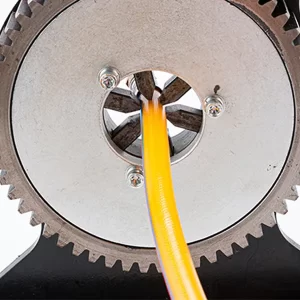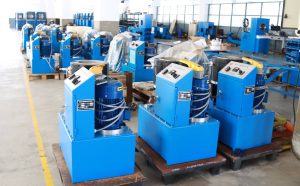Choosing the right hydraulic hose crimper for your business is crucial for ensuring efficient and safe operations. A hydraulic hose crimper is essential in the hydraulic industry, where high-pressure connections are vital. This article will explore the factors you should consider when selecting a crimper, helping you choose the best one for your needs.
1. What Should You Consider When Choosing a Hydraulic Hose Crimper?
Selecting the right hydraulic hose crimper is not a decision to be made lightly. There are several key factors that you need to consider, including your budget, the volume of work, and the type of hoses you will be crimping. But here’s the kicker… choosing the wrong crimper could lead to inefficiencies, leaks, or even failures in hydraulic systems, which could be dangerous and costly for your business.
The first consideration is the pressure capacity of the crimper. You’ll want a crimper that matches the pressure ratings of the hoses and fittings you are working with. Next, you’ll want to think about the crimping range. Crimpers come with different crimping diameters and shapes, so selecting the right one for your hose sizes is key. Finally, the quality of the crimper’s construction should not be overlooked. A well-built crimper can withstand wear and tear and offer long-lasting performance.
For example, if you’re working with hydraulic systems in a construction environment, you may need a crimper that can handle heavy-duty work and higher pressures. If your operations involve lighter work, a smaller, more compact crimper could suffice. What’s the real story? Understanding these factors will guide you toward the right choice for your business.
| Factors to Consider | Details |
|---|---|
| Pressure Capacity | Matches hose and fitting ratings |
| Crimping Range | Suitable for different hose sizes |
| Build Quality | Durability and longevity |
2. What Are the Different Types of Hydraulic Hose Crimpers?
When it comes to hydraulic hose crimpers, there are several types to choose from. Ready for the good part? Here, we will compare three of the most common types: manual crimpers, electric crimpers, and pneumatic crimpers. Each has its unique advantages and is suited for different types of work environments.
Manual crimpers are a more cost-effective option, offering simplicity and reliability for smaller, low-volume jobs. They require physical effort to operate and are typically more affordable. However, manual crimpers may not be efficient for larger-scale operations. This is where it gets interesting… Electric crimpers, on the other hand, are faster and more efficient, making them ideal for higher-volume tasks. They require less manual effort, allowing operators to work more quickly. Lastly, pneumatic crimpers provide the highest level of efficiency and speed, making them perfect for heavy-duty work environments with large volumes of crimping.
For instance, in a factory setting where hydraulic hose production is continuous, an electric or pneumatic crimper would be more appropriate. However, for smaller workshops or mobile applications, manual crimpers might still be the better choice due to their portability and simplicity.
| Type of Crimper | Best For | Advantages |
|---|---|---|
| Manual Crimpers | Low-volume work | Cost-effective, portable |
| Electric Crimpers | Medium-volume work | Faster, more efficient |
| Pneumatic Crimpers | High-volume, heavy-duty work | Fastest, most efficient, high precision |
3. How Does Crimping Pressure Affect Hose Performance?
Crimping pressure plays a vital role in determining how well a hose will perform under pressure. But here’s the kicker… Too little crimping pressure can result in loose fittings that lead to leaks, while too much pressure can weaken the hose and fittings, leading to failure under high stress.
To achieve the right crimp, it’s crucial to match the crimping pressure to the hose’s pressure rating. Manufacturers typically provide guidelines for optimal crimping pressure based on the hose type, size, and material. What’s the real story? Proper crimping ensures the longevity of the hose, the safety of the hydraulic system, and operational efficiency.
For example, high-pressure hydraulic systems used in industrial machinery require crimping at higher pressures to prevent leaks and ensure safety. In contrast, lower-pressure applications such as agricultural machinery may only require lower crimping pressures. Ready for the good part? Keeping track of crimping pressure settings can help avoid costly mistakes.
| Crimping Pressure | Effects on Hose Performance | Applications |
|---|---|---|
| Low Pressure | Loose fittings, potential leaks | Low-pressure systems |
| High Pressure | Damaged hose and fittings | High-pressure systems |
| Optimal Pressure | Secure, leak-proof connection | Standard and high-pressure systems |
4. What Are the Key Features to Look for in a Hydraulic Hose Crimper?
When selecting a hydraulic hose crimper, several features are crucial to ensure it meets your needs. What’s the real story? The first and most important feature is the crimping range. The crimper must be capable of handling the hose sizes and types you frequently work with.
Another critical feature is adjustability. Look for a crimper that allows you to adjust the crimping diameter and force. This flexibility ensures you can crimp a wide range of hoses, increasing the versatility of the tool. Durability is also key, as crimpers used in industrial settings can experience significant wear over time. High-quality materials such as hardened steel and corrosion-resistant coatings are essential for a long lifespan.
For example, some crimpers offer easy-to-use, intuitive digital controls for adjusting crimping force, which can be beneficial for operators working with a variety of hose sizes and materials. Others may feature a built-in safety system that prevents over-crimping, ensuring consistent results without damaging the hoses.
| Feature | Why It’s Important |
|---|---|
| Crimping Range | Handles different hose sizes and types |
| Adjustability | Allows flexibility for various hose types |
| Durability | Ensures long-term use and reliability |
5. How Do You Maintain a Hydraulic Hose Crimper?
Proper maintenance is essential to keep your hydraulic hose crimper working efficiently. What’s the real story? Without regular maintenance, the performance of the crimper can decline, leading to inaccurate crimps and unnecessary downtime.
To maintain your crimper, it’s essential to clean it after each use. Ready for the good part? Regularly inspect the crimping dies for wear and tear. If the dies become worn, they may not create a proper seal, which can affect the performance of the hose. Lubricating moving parts and tightening any loose bolts or screws will ensure smooth operation.
In addition, always store the crimper in a dry, clean environment to avoid rust and other damage. But here’s the kicker… Keeping detailed maintenance records can help you track when parts need to be replaced, ensuring that the crimper is always operating at peak efficiency.
| Maintenance Task | Frequency | Purpose |
|---|---|---|
| Cleaning Crimper | After each use | Prevents dirt and debris buildup |
| Inspect Crimping Dies | Regularly | Ensures accurate crimping |
| Lubricating Moving Parts | As needed | Prevents wear and tear |
6. What Are the Safety Considerations When Using a Hydraulic Hose Crimper?
Safety should always be a top priority when operating a hydraulic hose crimper. But here’s the kicker… Crimping involves high-pressure systems, and improper handling can result in injuries or equipment damage.
First, always ensure that the crimper is properly set up before use. Check for loose fittings or misaligned parts, as these can lead to accidents. Operators should also wear appropriate personal protective equipment (PPE), such as gloves, safety goggles, and steel-toed boots, to protect themselves from potential hazards.
Another important safety consideration is to avoid over-crimping. What’s the real story? Over-crimping can cause the hose or fitting to fail, leading to dangerous situations. Using a crimper with a built-in pressure gauge or digital control can help prevent over-crimping and ensure a safe operation.
| Safety Measure | Why It’s Important |
|---|---|
| Proper Setup | Prevents misalignment and accidents |
| Personal Protective Equipment (PPE) | Ensures operator safety |
| Pressure Gauge | Prevents over-crimping and potential hazards |
7. How Do You Choose Between Manual and Electric Hydraulic Hose Crimpers?
Choosing between manual and electric hydraulic hose crimpers depends on several factors, including the volume of crimping you need to do, your budget, and the specific requirements of your business. What’s the real story? Manual crimpers are more affordable and portable, making them a good choice for low-volume work or mobile operations.
Electric crimpers, however, are faster, more efficient, and provide consistent crimping results with minimal effort. This is where it gets interesting… For businesses that deal with large volumes of hydraulic hose crimping, an electric crimper may be the better option, even though it involves a higher initial investment. The time saved and the quality improvement often outweigh the additional cost.
In high-pressure environments where consistency is key, electric crimpers can help ensure that every crimp is perfect. However, if you’re just starting out or working with fewer hoses, a manual crimper may be sufficient.
| Crimper Type | Best For | Advantages |
|---|---|---|
| Manual Crimpers | Low-volume, mobile work | Cost-effective, portable |
| Electric Crimpers | High-volume work | Faster, more efficient, precise |
8. How Do Hydraulic Hose Crimpers Impact Your Production Efficiency?
Hydraulic hose crimpers can have a significant impact on your production efficiency. But here’s the kicker… The right crimper can drastically reduce production time, improve consistency, and reduce waste. For example, electric crimpers can crimp hoses much faster than manual options, saving valuable time in high-volume operations.
Furthermore, modern crimpers come with features that allow for faster setup, less downtime, and reduced scrap material. What’s the real story? In a fast-paced environment, time is money, and reducing inefficiencies is crucial to maintaining profitability.
For instance, automated crimping machines can measure and adjust the crimping force based on the hose size, minimizing errors and waste. In contrast, manual crimpers require manual adjustments for each job, which can slow down production.
| Crimper Type | Impact on Efficiency | Example |
|---|---|---|
| Manual Crimpers | Slower setup, more adjustments | Suitable for small operations |
| Electric Crimpers | Faster, more automated | Ideal for high-volume production |
9. How to Choose the Right Hydraulic Hose Crimper for Specific Applications?
When selecting a hydraulic hose crimper, it’s important to match the tool to your specific application. Ready for the good part? Whether you’re working in automotive repair, construction, or heavy machinery, each industry has unique crimping needs.
For example, automotive applications typically require smaller, more precise crimping for various hose types. On the other hand, construction sites may demand crimpers that can handle larger hoses with higher pressure ratings. This is where it gets interesting… Choosing a crimper with the right range and power is key to ensuring high-quality and safe connections.
For instance, if you’re working with agricultural equipment, you may need a crimper that can handle large diameter hoses and high crimping pressures. What’s the real story? Understanding your industry’s specific requirements can help you select the best crimper for your business needs.
| Industry | Crimper Requirements | Example Applications |
|---|---|---|
| Automotive | Precise crimping, small hoses | Car repair and maintenance |
| Construction | Larger hoses, higher pressures | Heavy machinery and equipment |
| Agriculture | Large diameter hoses, high pressure | Agricultural machinery and systems |
10. How Do You Ensure the Hydraulic Hose Crimper You Choose is Durable?
Durability is a key factor when choosing a hydraulic hose crimper, especially if you plan to use it frequently in harsh conditions. But here’s the kicker… A durable crimper made from high-quality materials will save you money in the long run by reducing repair and replacement costs.
Look for crimpers made from high-strength steel or other robust materials. What’s the real story? These materials can withstand the wear and tear of frequent use without compromising performance. Additionally, crimpers with corrosion-resistant coatings will last longer, even in harsh environments where moisture or chemicals are present.
For example, crimpers used in marine or construction settings must be resistant to rust and corrosion. By investing in a durable crimper, you’re ensuring that it will perform at its best for many years, even under tough conditions.
| Material | Durability Features | Example Use Case |
|---|---|---|
| High-strength Steel | Resistant to wear and tear | Industrial and construction sites |
| Corrosion-resistant Coatings | Prevents rust and corrosion | Marine environments |
11. What Are the Cost Considerations When Buying a Hydraulic Hose Crimper?
When purchasing a hydraulic hose crimper, cost is an important factor to consider. What’s the real story? A lower-cost crimper may seem attractive, but it could end up being more expensive in the long run if it requires frequent repairs or replacement. Balancing cost with quality is key.
Investing in a high-quality, durable crimper may cost more upfront but will save you money over time due to fewer repairs and greater reliability. Ready for the good part? A well-made crimper can provide consistent performance, improve productivity, and ensure safety, all of which contribute to long-term savings.
| Cost Range | Quality Considerations | Long-term Savings |
|---|---|---|
| Lower-cost Crimpers | May require more maintenance | Increased repair and replacement costs |
| Higher-cost Crimpers | Better durability and precision | Reduced downtime, better performance |
12. How Can You Test a Hydraulic Hose Crimper Before Purchase?
Testing a hydraulic hose crimper before purchase is crucial to ensuring it meets your needs. What’s the real story? A good test involves checking its crimping capacity, pressure handling, and ease of use.
Many manufacturers allow you to perform a test crimp on-site to assess the crimper’s performance. This is where it gets interesting… Pay attention to how easy it is to adjust settings, load hoses, and make precise crimps. A crimper that feels difficult to operate might lead to operator fatigue and errors.
| Test Feature | What to Look For | Why It Matters |
|---|---|---|
| Crimping Capacity | Suitable for your hose sizes | Ensures proper crimp size and pressure |
| Adjustability | Easy to adjust settings | Provides flexibility for different jobs |
| Ease of Use | User-friendly interface | Reduces operator fatigue and errors |
13. What Are the Best Brands of Hydraulic Hose Crimpers?
Choosing the best brand of hydraulic hose crimpers can make a big difference in the long run. But here’s the kicker… Some brands have a longstanding reputation for producing high-quality, reliable crimpers, while others may offer lower-quality models that could end up costing more.
Brands like Gates, Parker, and Eaton are known for their reliability, offering a wide range of crimpers that are suitable for different applications. What’s the real story? Choosing a well-known brand gives you peace of mind knowing that the crimper will be built to last and perform at its best.
| Brand | Reputation | Product Range |
|---|---|---|
| Gates | High-quality, reliable | Wide range of crimpers for various industries |
| Parker | Known for precision and durability | Specializes in heavy-duty applications |
| Eaton | Trusted in the hydraulic industry | Offers both manual and electric crimpers |
14. How Can You Maximize the Longevity of Your Hydraulic Hose Crimper?
Maximizing the longevity of your hydraulic hose crimper involves regular maintenance and proper use. What’s the real story? Keeping the crimper clean and free from debris will ensure it continues to perform efficiently.
Routine maintenance, such as checking for worn parts, cleaning moving components, and applying lubricants, can also extend the lifespan of the crimper. Ready for the good part? If the crimper is used in harsh environments, consider investing in a model with additional protective features such as dust seals or corrosion-resistant coatings.
| Maintenance Task | Frequency | Benefits |
|---|---|---|
| Clean Crimper | After each use | Prevents damage and clogging |
| Inspect Crimping Dies | Regularly | Ensures accuracy and longevity |
| Lubricate Moving Parts | As needed | Reduces wear and tear |
15. Why Should You Invest in a High-Quality Hydraulic Hose Crimper?
Investing in a high-quality hydraulic hose crimper ensures that your business can operate efficiently and safely. What’s the real story? A durable and precise crimper can improve your productivity and reduce downtime caused by faulty equipment.
By choosing a quality crimper, you ensure that your hydraulic connections are secure, reducing the risk of leaks and failures. This is where it gets interesting… A good crimper will last longer, perform better, and provide a safer working environment for your team.
| Reason to Invest | Benefits | Long-term Impact |
|---|---|---|
| Durability | Fewer repairs and replacements | Cost savings over time |
| Precision | Improved performance and safety | Consistent, high-quality crimps |
| Efficiency | Faster crimping, less downtime | Increased productivity |
FAQ
Q1: What is a hydraulic hose crimper?
A hydraulic hose crimper is a tool used to join hydraulic fittings to hoses by applying pressure to create a secure, leak-proof connection.
Q2: How does a hydraulic hose crimper work?
The crimper applies controlled pressure to a fitting, which then compresses it onto the hose. This ensures a tight, secure connection that can handle high pressures.
Q3: What is the difference between manual and electric crimpers?
Manual crimpers require physical effort and are suitable for small-scale operations, while electric crimpers provide faster, more efficient crimping for larger volumes of work.
Q4: How do you maintain a hydraulic hose crimper?
Regular cleaning, lubrication, and inspection of crimping dies and moving parts are necessary to ensure long-lasting performance and accuracy.
Q5: How do I choose the right hydraulic hose crimper for my business?
Consider factors like crimping capacity, hose size compatibility, the volume of crimping needed, and the durability of the tool when choosing a crimper for your business.





